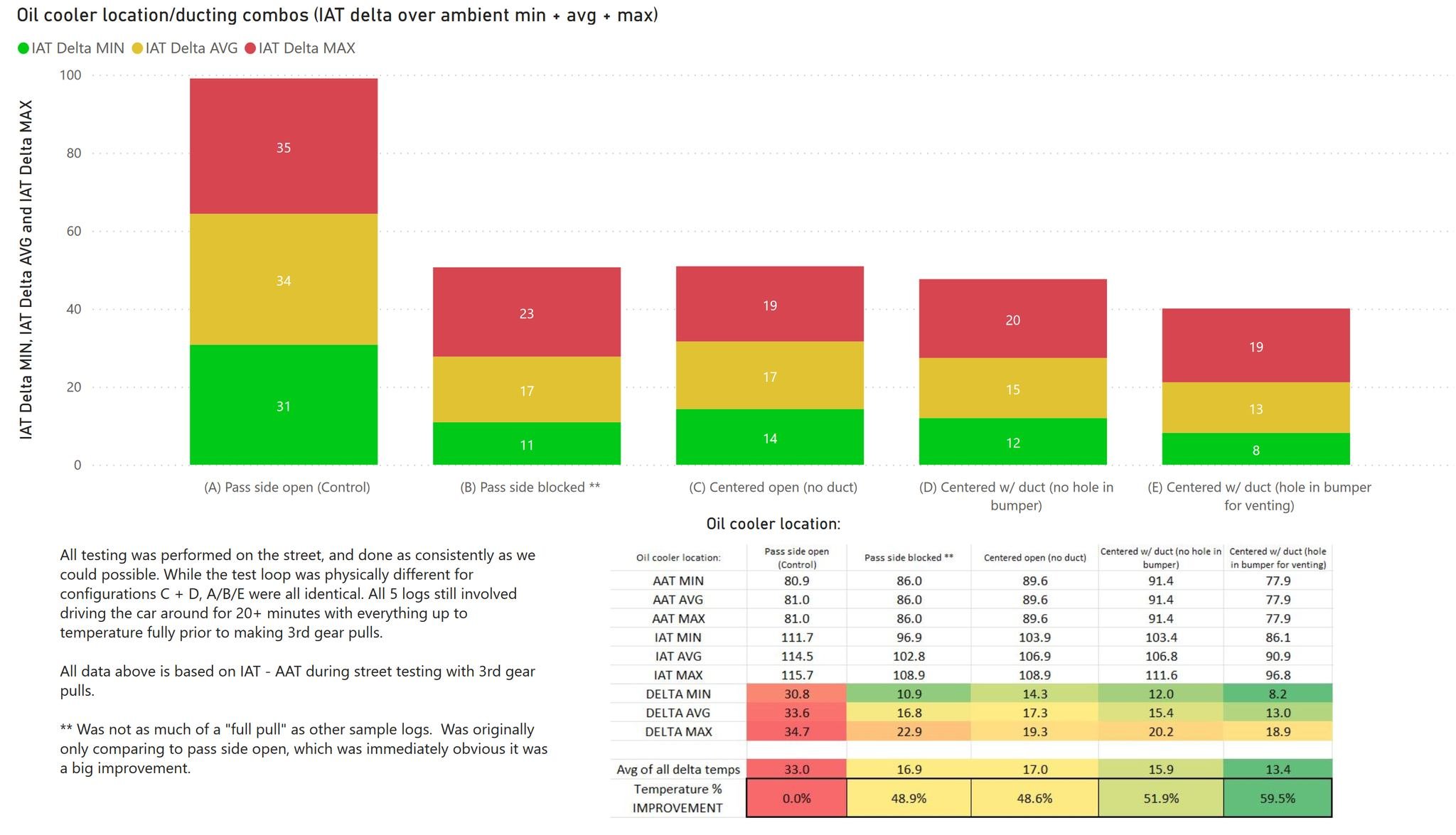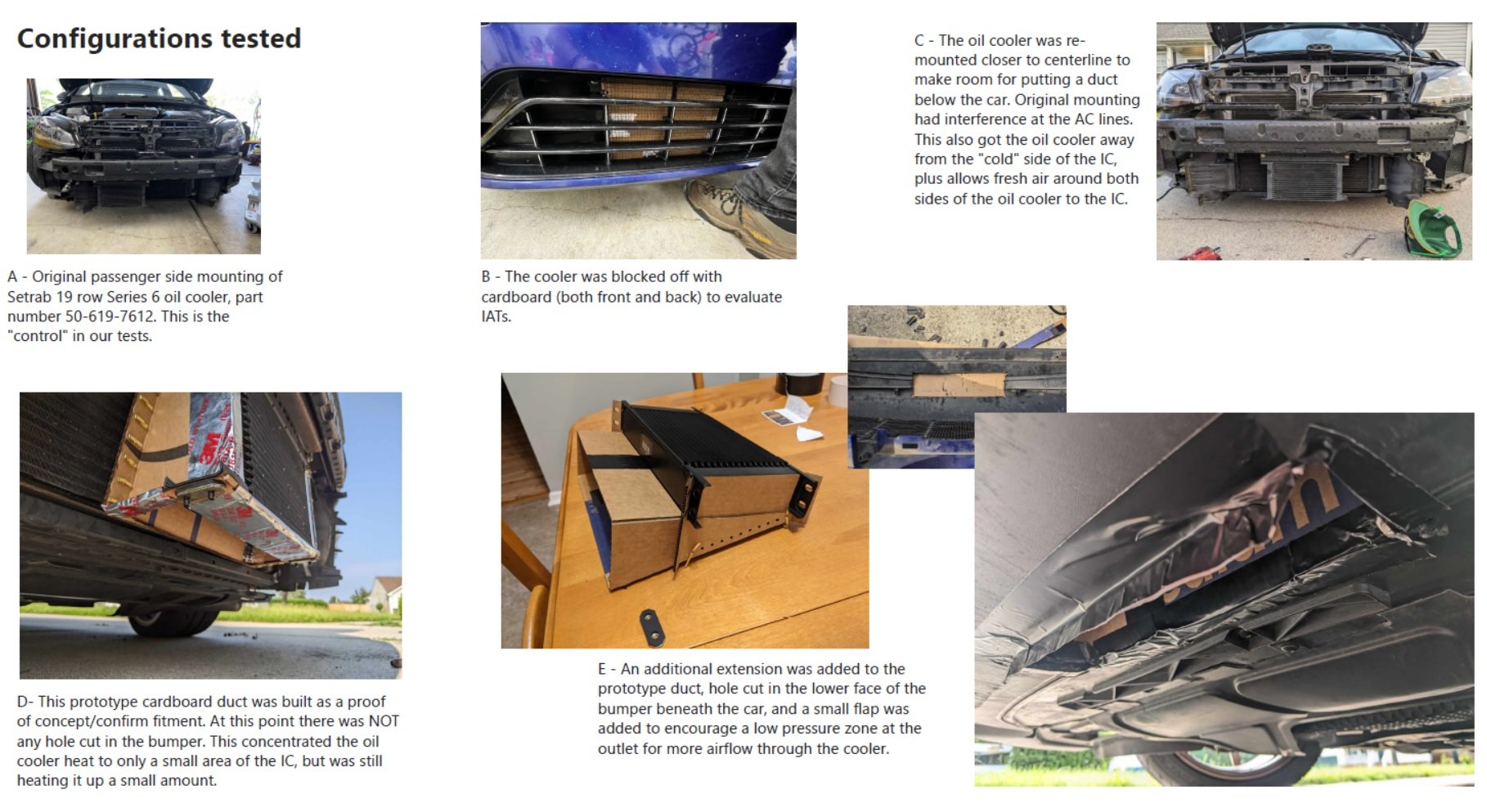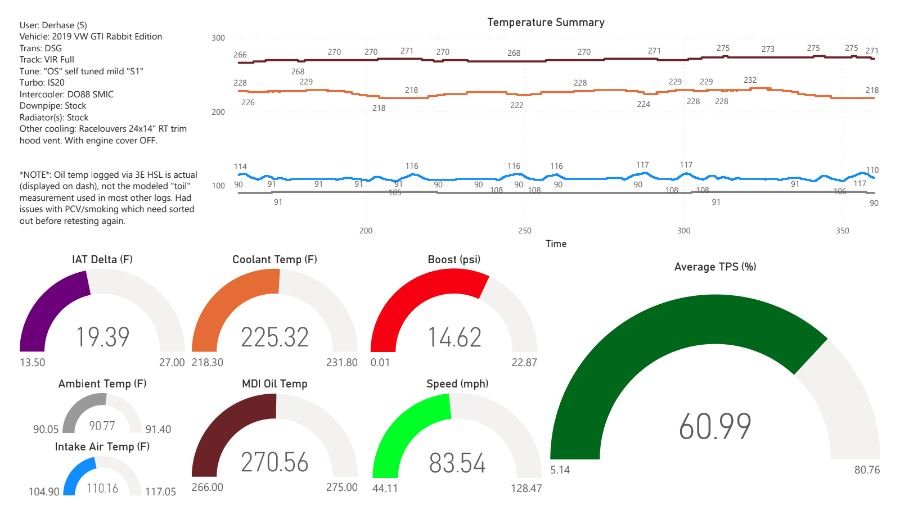When does Data become Useful?
All the data in the world won’t help if you don’t use it right.
All data has the potential to be useful - but if you can’t interpret it correctly or can’t drive consistently, it’s a wasted effort.
It will be stressed time and time again throughout this website, the driver is hands-down the most important thing in the car.
If you’ve never been on a track before, a modern GoPro or similar action camera that records video + GPS speed will tell you everything you need to reflect on your driving between sessions. Looking at your minimum corner speeds and seeing those speeds increase as the day goes on is simple and will help you to “judge” how well you’re currently doing vs the first session of the day.
Something else I also recommend initially is to take your car on track as close to stock as possible. These cars are a ton of fun to add power to and customize, but none of that matters for your first time on track. In fact there’s a good chance some stuff done will eventually cause problems (more on that later).
If you absolutely must run a lap timer (such as an AIM Solo or Harry’s Lap timer, etc), leave the screen out of view while you’re driving. You need to be focusing on the track, not your time.
The only data I would recommend is keep the dash gauge set to “oil temp” and glance briefly on long straights. You're fine up to 270-275F. Your first time out will almost for sure not have any problems because you just won’t have the ability to push the car hard enough to expose it’s weaknesses yet.
While you’re actually at the event: LISTEN TO YOUR INSTRUCTOR. Learn to look ahead. Learn the flags and flag stations before anything else - you’ll be thankful for the heads up that there is debris on track when an umbrella shows up in a 130mph braking zone. The corner worker’s job is to keep you safe. Use them.
Braking from 130mph into Rollercoaster at Virginia International Raceway
The corner worker waving the debris flag ~400ft earlier made me aware to expect something on track. I’m not sure what I was expecting - but it was not an umbrella.
Learn what too much brake feels like. Learn what too much throttle feels like on corner exit. Get a general feel of what your car does at the limits. LEARN is the key take-away.
The the most important data comes from your eyes, your hands, and your ass.
I highly recommend checking out https://speedsecrets.com/ as well. Ross Bentley has TONS of resources, great podcasts, articles, etc. I listen to his podcasts regularly, especially in the coming weeks before a track weekend.
Consistency is Key.
When the basics become programmed in your brain, you will find your pace in general starts to speed up naturally as you get comfortable. You’ll be more in tune with the car, visual cues on track, being on track with others, passing, etc. You’ll feel less jittery and maybe even not have a death grip on the steering wheel at all times.
Consistency is the next goal.
Purchasing a lap timer or an aux GPS unit + inexpensive phone app should be the next step. Collect lap time data to measure consistency.
Very basic data that you get from an Aim Solo, Garmin Catalyst, Harry’s Lap Timer, etc such as lap times and min speeds in every corner will tell you a lot about how consistently you are driving. I like to refer to Ross Bentley’s 5-15-1 Process as a general rule of thumb when it comes to average lap times:
“[When looking at the Top 3 lap time variance]
• 0.5[%] or less – excellent
• 0.5-1.0[%] – okay consistency, but should be improved (consider the number of laps and the amount of traffic – excuses!); this could be the number one priority for the next session
• 1.0-2.0[%] – not consistent enough, and improving this is priority one
• 2.0-plus[%] – very inconsistent; need to understand why, and work on this one area ”
That works out to roughly 0.3 sec per minute of lap time for 0.5% variance.
For example: If you are running between 2:00 to 2:30 lap times at VIR, that means you are trying to make sure your top 3 laps from a single session are all within 0.6 to 0.75 seconds of each other. Chances are you may still be “consistently slow” - but the good news is we can work with that!
With consistency, you can drive every session on track with INTENT.
Play with staying on the throttle just a tiny bit longer. Enter that corner just 1mph more. Work on trail-braking. Try experimenting with the line.
Drive with Intent.
With consistency you can go out in every session, and make a purposeful change to assess if it was better or not, and have it show up either as a lower lap time, a higher minimum corner speed (vmin), or a higher speed entering the next turn or a braking zone (vmax). People do not realize just how much of a role that driver ability (and the track in question) plays into stressing these cars from a heat-management perspective.
At this point you really need to think about logging oil and coolant temperatures, IATs, etc. to fully understand how close to the car’s thermal limits you are getting. You can also log your TPS% and compare one lap to another. (Hint: The fastest way around a race track is to be on throttle as much as possible, and as often as possible).
As a reasonably fair rule of thumb, if you are turning times faster than the Spec Miata lap record at whatever track you’re at - you’re probably moving pretty quickly and is likely about the time you’ll start pushing the inherent issues with these cars.
Use Data to Solve your Problems and Push the Platform.
This is where the fun really starts, and my motivation to start this website. You’re pushing the car hard and now you need to make informed decisions on what will make it faster. Or what will keep it cool. Or what will make it handle better. The logging abilities of the MQB platform are phenomenal, and we can leverage it to push the platform while solving it’s shortcomings along the way.
We can also start looking a LOT harder at driver inputs using steering angle, interpreting brake and throttle traces, playing around with whether an upshift or downshift is helpful or not, etc. Remember how the driver is the most important part in the car? Never stop working on the nut behind the wheel.








